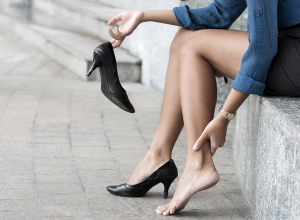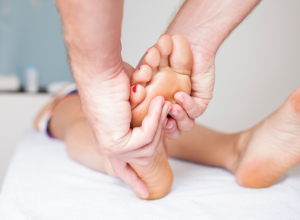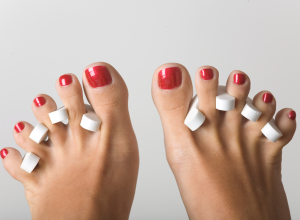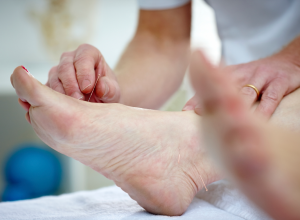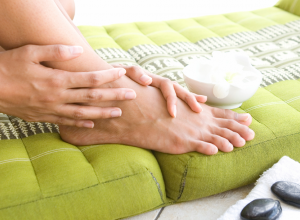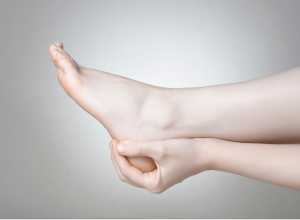
Plantar Fasciitis
Plantar fasciitis, sometimes called jogger’s heel, is a condition that happens when the plantar fascia — the thick band of tissue that runs across the bottom of the foot and connects the heel bone to the toes — experiences pain and inflammation. About 80% of heel pain cases turn out to be plantar fasciitis.
Symptoms
Plantar fasciitis is caused by repetitive stretching or tearing of the plantar fascia and usually causes a sharp, stabbing pain in the back and underside of the foot that is worse in the morning and generally decreases during normal activity in the day. The pain can also be triggered by long periods of walking or standing, as well as standing up from a seated position. In addition, the foot may have limited flexing capabilities due to tightness in the calf or Achilles tendon.
Often times, people with plantar fasciitis also develop calcaneal spurs (heel spurs), which are bony protrusions on the bottom on the foot that grow in response to the plantar fascia constantly pulling at the heel.
Causes
Experts don’t agree on what exactly causes plantar fasciitis, but sites like the American Academy of Orthopaedic Surgeons (AAOS), OrthoInfo and MedlinePlus say that the condition can be blamed on things like injuries, placing extreme strain on the foot muscles, wearing high heels or poorly fitting shoes, overuse of the feet, obesity, and walking abnormalities that create extreme stress on the foot bones, ligaments and nerves near the heel.
Foot abnormalities like flatfeet and pes cavus (high arches), or having ankylosing spondylitis or chronic inflammatory disease of the axial skeleton, can also lead to plantar fasciitis and calcaneal spurs.
Treatment
Most cases of plantar fasciitis can be resolved within a few weeks to a few months with rest, stretching and reducing physical activity. Sometimes patients are advised to try physiotherapy, orthotics, splinting, steroid injections, and/or extracorporeal shockwave therapy (ESWT), which delivers microtrauma to the affected area that is said to speed up healing.
Typical ways to deal with pain caused by heel spurs and plantar fasciitis include heat and ice therapy, calf-strengthening exercises, and using non-steroidal anti-inflammatory drugs (NSAIDs) such as aspirin or ibuprofen.
Because most cases of plantar fasciitis be cured with rest, stretching and reduced physical activity or actually heal on their own within six months to a year, surgery is rarely recommended. Considered a last resort, the typical surgical procedures include gastrocnemius recession (a surgical lengthening of the calf muscle) and fasciotomy (when the fascia is cut to relieve tension). These surgeries often cause chronic pain and dissatisfaction and are thereby rarely preformed and only recommended when all other nonsurgical measures have been exhausted.
Notice concerning medical entries:
Articles having medical content shall serve exclusively for the purpose of general information. Such articles are not suitable for any (self-) diagnosis and treatment of individual illnesses and medical indications. In particular, they cannot substitute for the examination, advice, or treatment by a licensed physician or pharmacist. No replies to any individual questions shall be effected through the articles.






